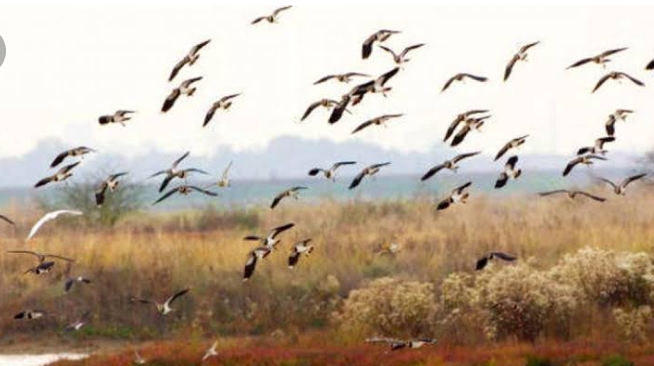Srinagar, 08-Dec; Maintaining their centuries-old tryst with Kashmir, over four lakh migratory birds have arrived here from far off lands to spend the winter months in the relatively less harsh cold of the Valley. These hardy souls fly in from Siberia and China, as also the Philippines, Eastern Europe and Japan.There are birds of passage that come to the Valley for a short period during their migration to the Indian plains. These include the cormorants and sandhill cranes.People living in villages around the Valley’s wetland reserves witness hundreds of migratory birds landing and taking off each day as they leave the reserves for nocturnal feeding in different lakes and other water bodies in the evening and return in the morning.The existence of the migratory birds is a pageant of colour and cackle which beckons humankind to preserve the delicate ecological balance of the planet. Rashid Naqash, regional wildlife warden said, “We have over 4 lakh migratory birds of different species in our bird reserves and other wetlands at present.The wetland reserves of Hokarsar, Shallabugh, Mirgund and Hygam are under “interventional management” to make them more comfortable for the migratory birds.”At present, we have around a lakh migratory birds in Hokersar bird reserve, another lakh in Hygam and 50,000 in Shallabugh bird reserve.”In addition, there are 20,000 birds in Chatlum, 30,000 in the Wular Lake, and over a lakh in the Dal Lake in Srinagar.” The wildlife warden said the migratory bird species that have arrived here so far include mainly geese, mallards, pochards, gadwals, pintails, waders, coots and the common teals.During the extreme freeze inside the wetland reserves, when natural feeding becomes difficult, the wildlife department arranges large stocks of paddy for feeding these birds.The flight of these birds from their summer homes to the Valley is a marvel of navigation. By instinct, these visitors fly in highly disciplined formations led by the eldest bird of each species.However, the threat of poaching to these birds over the years is a major concern for these migratory birds as well as the Wildlife Department, which according to the concerned officials has been stopped to great extent.
EDITOR PICKS
POPULAR POSTS
ABOUT US
SACH News TM- voice of people of Jammu Kashmir. We are Publishing House of Sach Jammu(English Weekly). Sach News is one of the popular weekly newspaper of Jammu. We provide you Latest news on politics, sports, crime, education, real estate, business entertainment and much more.
Contact us: [email protected]
© Sach News 2014-2023 | Maintained by Webng.in





